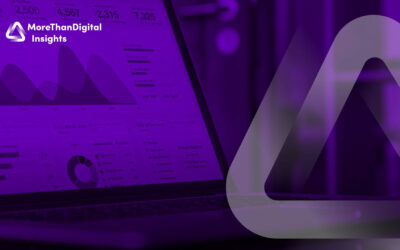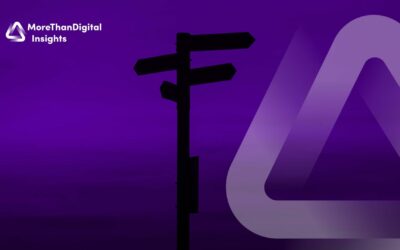As social media becomes more and more an important part of any business, measuring the success in social media is critical. What good is it to have a Facebook page or Twitter account if you can’t track how well they are performing? Luckily, there are a number of Key Performance Indicators (KPIs) that can help you measure the success of your social media campaigns. In this article, we will discuss three essential KPIs for social media: reach, engagement, and leads.
In this article, we will discuss 15 Social Media KPIs that managers should be aware of.
Further Read: Ultimate Guide on KPIs – Incl. List of 200 KPIs for Businesses
What are Social Media KPIs?
IT & Technology KPIs (key performance indicators) are essential metrics that companies use to measure their IT departments’ effectiveness and productivity. As technology continues to evolve, companies must track these KPIs to stay competitive and up-to-date. Companies should carefully monitor these KPIs as they reflect the company’s ability to effectively use technology and resources.
These KPIs can be divided into four main categories: Availability, Performance, Security, and Cost Management. Each category is essential in measuring the overall success of an IT department and its ability to meet goals.
Why is it essential to track Social Media KPIs?
Tracking IT & Technology KPIs is essential for any organization that relies on technology. These metrics provide managers with critical insights into how their IT departments are performing and where they need to improve. With these metrics, companies can identify areas of strength as well as areas of weakness so they can take the necessary steps to improve them. By tracking and analyzing these KPIs, companies can make better decisions about their IT departments and ensure they are running efficiently.
Overview of the most critical Social Media KPIs
- Social Share of Voice (SSoV)
- Total Reach
- Total Impressions
- Followers or Fans or Subscribers
- Audience Growth Rate
- Share Rate (Shares or ReTweets)
- Interest Rate (Likes, Reactions, Favorites)
- Response Rate (Comments, Replies)
- Key Post or Hashtag Reach
- Link Clicks
- Site Traffic From Social (By Platform)
- Conversions From Social (#)
- Conversion Rate From Social (%)
- Revenue From Social (#)
- Social Program ROI
Explanation of 15 important Social Media KPIs
Social Share of Voice (SSoV)
Social Share of Voice (SSoV) has become an essential Social Media KPI for marketers in recent years. It is a measure of online conversations and mentions regarding a particular brand, product or person. SSoV can capture organic and paid conversations across all relevant social networks in relation to competitors and the industry as a whole. In short, it is an informational measure meant to gauge how resonant and influential your brand is on social media compared to other similar organisations or individuals. By keeping track of your SSoV score you can identify customer trends, determine where your message is getting traction, and track conversions. With the right insights gleaned from your SSoV studies, you can quickly adjust and refine your overall marketing strategy accordingly.
Total Reach
Total Reach is becoming an essential Social Media KPI for marketers to monitor, as it gives them the ability to measure how many people have been exposed to their brand’s content across all channels. It goes beyond “likes” and other more surface-level metrics and instead encompasses the entirety of a brand’s reach by providing the total number of unique individuals who were exposed to its content. By recognizing this metric, marketers can cultivate better understanding of their audience size, helping inform decisions around platforms and strategies used in future campaigns. With Total Reach as part of your social media analytics toolkit, you are unlocking powerful insights into how far-reaching your messages are and how well your content is performing with key audiences.
Total Impressions
Measuring the success of a social media campaign is often summarized by likes, shares, and follows. A more comprehensive metric is ‘total impressions,’ which gives marketers an indication of the reach their campaign receives, as well as the level of engagement they successfully receive from that reach. Total impressions demonstrate the total number of times potential viewers see content. This is different from total reach, although related; it takes into account multiple impressions for one user as opposed to a single view of content for a single user. Total impressions accurately measure how many times your content was seen and gives you deeper insight into audience retention. Understanding this important metric will allow your team to better measure the effectiveness of campaigns and make changes on-the-fly if needed.
Followers or Fans or Subscribers
One of the most mentioned key performance indicators (KPIs) used to judge success in Social Media is followers or fans or subscribers, depending on the platform used. The number of followers can an be excellent gauge when tracking how well a business’s content is performing and whether its message is resonating with its target audience. Regularly monitoring these numbers can offer valuable insights into the success of campaigns, allowing businesses to optimize their strategies accordingly and reach their goals more rapidly.
Audience Growth Rate
The audience growth rate is an important key performance indicator (KPI) when evaluating the effectiveness of a social media campaign. It’s one of the first metrics used to measure how successful and impactful a campaign has been. This KPI measures how quickly new people are being attracted and retained within an online community or platform, which can be difficult to quantify as there is not just one clear-cut number for it – rather, it depends on various factors that come into play throughout the lifecycle of a campaign. Understanding the audience growth rate of different campaigns will enable brands to gain invaluable insight for future campaigns and ensure that their content is reaching its intended target audience at the right time, with maximum engagement potential.
Share Rate (Shares or ReTweets)
Shares and Retweets serve as a reliable KPI when it comes to social media. They are an easy way to track engagement with your content, providing insight into the impressions received by users who have seen your post. A high number of retweets and shares can be used to measure reach and amplification, while also gauging the quality of content shared. Additionally, they provide invaluable feedback on how audiences respond emotionally to particular posts or campaigns, helping craft more effective strategies in the future. Thus, analyzing the rate of shares and retweets is a crucial part of any successful social media marketing plan today.
Interest Rate (Likes, Reactions, Favorites)
Like, reactions, and favorites are key performance indicators commonly used to measure social media success. Brands use them as an easy way to gauge how their content resonates with their followers, as well as provide feedback on which updates are generating engagement and interaction versus those that don’t. Interest rates have become an important tool for marketers because it helps them assess the value of an audience’s attention by measuring the level of turnover in shares, comments, retweets and other forms of engagement. By tracking this data, marketers can better target content and direct resources towards producing updates that are receptive to receiving a higher number of likes, reactions or favorites.
Response Rate (Comments, Replies)
Understanding the effectiveness of one’s social media presence has become increasingly important, and that is why response rate should be seen as a key performance indicator (KPI). Response rate is determined by the percentage of comments, likes, messages, and other interactions on a post that have received a reply. It is a great way to uncover the level of engagement with one’s audience. By replying to each and every comment quickly, content creators can very efficiently demonstrate their appreciation for audience input. Keeping track of response rate can also give clearer insights into what type of content receives the most attention from followers, which could help unlock new levels of engagement overall.
Key Post or Hashtag Reach
Key Post Reach is a great social media KPI to gauge the success of your posts. It monitors the number of users who saw your post, including all organic and sponsored views. Hashtag Reach goes a step further and evaluates how many unique users were reached through the hashtag you included in your post. While Key Post Reach looks at one single post, Hashtag Reach measures the overall reach of multiple posts that involve a certain hashtag or phrase. Both of these KPIs can be used to measure the effectiveness of your campaigns, providing insight into what topics perform best with your followers. Knowing this information can help brands optimize their content to reach better results from their social media presence.
Link Clicks
Link clicks indicate how many times a user has interacted with a post or advertisement to the point of actually clicking the link associated with it. They give insight into how often users engage with and respond to social media content, and how successful campaigns and posts are performing. Link clicks provide useful data that can aid in adjusting future strategies, including content type, target audience, placement, etc. Although other KPIs such as post engagement and impressions also offer valuable information, link clicks are particularly pertinent when it comes to measuring campaign success since they provide direct access to an organization’s website or landing page.
Site Traffic From Social (By Platform)
As more businesses are turning to digital marketing for their outreach and brand promotion, it is important to measure the impact of social media activity on a website’s visitors. Knowing which platform delivers more site traffic not only helps marketers optimize their campaigns, but also reveals wider trends in terms of what platforms and strategies work best to draw people in. By tracking the volume of traffic links from each social platform, businesses can clearly see how one tactic is performing better than another. Actively monitoring where the traffic is coming from and making changes accordingly is an important part of maximizing results in any social media campaign.
Conversions From Social (#)
Many social media managers seek to measure the success of their campaigns via KPIs such as Conversions From Social (#). This metric quantifies how many people have completed a desired action directly from a shared social media post. By tracking this metric, it’s possible to establish whether posts are driving engagement with followers or if changes need to be considered in order to maximize results. Usually, higher conversion rates imply higher levels of both engagement and sales that can result from sharing content on various social platforms. Simply stated, the number of Conversions From Social (#) is an effective way for businesses to understand their audience’s response to their posts and ultimately boost the success of their social media strategy.
Conversion Rate From Social (%)
Conversion rate from social media (CRFS) is one of the most powerful key performance indicators (KPI) used to measure the effectiveness of a brand’s social media marketing efforts. It measures the number of people who take a desired action after being exposed to advertising content across different platforms, such as blog posts, Facebook ads and YouTube videos. In other words, it tells you how successful a company is in converting engagements into leads and customers. Companies must accurately calculate their CRFS in order to track progress over time and benchmark against industry standards. A low CRFS indicates that there is room to optimize landing page design or adjust targeting criteria, while a high rate can signify that campaigns have found success.
Revenue From Social (#)
Understanding the money that you can potentially make on social media is a crucial part of running a successful business. The key to achieving this is to understand how to measure and optimize your revenue from social. One important way to do this is by gauging your success through the use of Social Media Key Performance Indicators (KPIs). These tools allow you to track things such as engagement rates, follower count, customer acquisition cost and much more. By assessing these metrics over time you can be sure that you are maximizing your potential revenue from social media, something that every business should strive for in this age of digital marketing.
Social Program ROI
Businesses that are just beginning to strategize their marketing plans must prioritize the return on investment (ROI) when investing in social media campaigns. That’s precisely why social program ROI has become increasingly important as a key performance indicator (KPI). With social program ROI, companies trying to maximize their finances can understand the effectiveness of their campaigns such as how many posts yielded click-throughs, what kind of feedback was generated from each post, or how followers interact with various posts. Through continuous evaluation of this KPI, businesses can leverage and benefit from proper assessment of the long-term effects that social media has on their bottom line.






